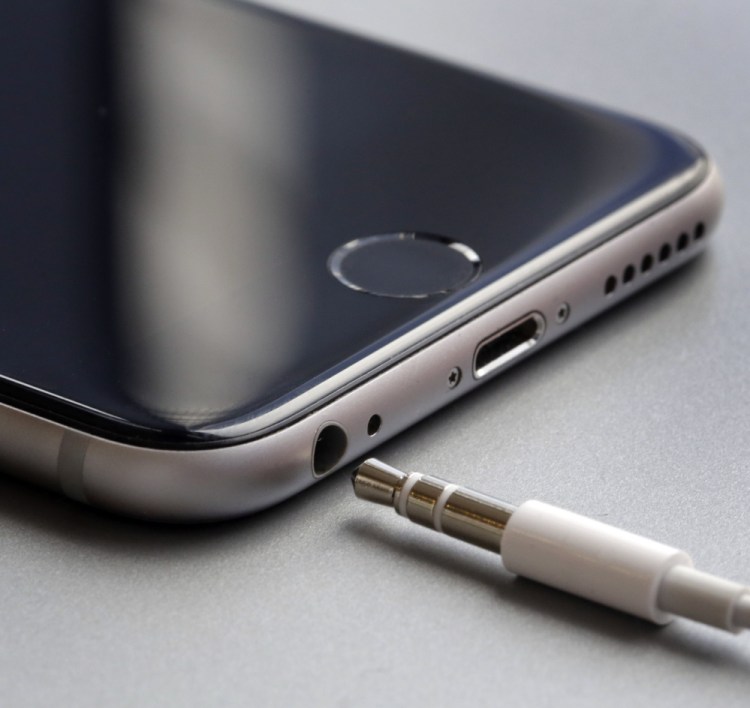SAN FRANCISCO — When Apple shows off its latest iPhone on Wednesday, it will answer a question it hasn’t had to address in years: “What’s it putting in the box?” (Besides the iPhone itself, that is.)
The iPhone has traditionally shipped with a pair of Apple’s iconic earbuds, made famous in early advertising for the iPod music player. But tech analysts and industry bloggers, citing leaks from Apple’s Asian suppliers, say it looks like the tech giant has decided to do away with the analog headphone jack in the next iPhone.
That means the earbuds themselves are in for a revamp, one that could hint at Apple’s plans for expanded use of wireless technology.
The headphone jack is drawing attention partly because there might not be many other major changes in this year’s iPhone. The new models – the iPhone 7 and 7 Plus, if Apple sticks to its usual convention – are expected to offer faster processors, more memory and improved cameras.
But despite a recent dip in iPhone sales, most Apple watchers expect the company to save its next big overhaul for 2017, the 10th anniversary of the first iPhone’s release.
Though it might not seem dramatic, eliminating the 3.5 millimeter analog jack would be controversial. On the plus side, it could let Apple make the iPhone slightly thinner and possibly waterproof; it might also free up space for other components.
But it also means future iPhone buyers will need new headsets that use a digital connection. That could just mean changing the headset cord so that it plugs into the same port that recharges the device. Or it could herald an Apple commitment to wireless earbuds that connect to the phone via a technology such as Bluetooth. Apple already sells wireless headsets from Beats Electronics, which it acquired two years ago for $3 billion.
While Apple hasn’t commented, reports of the change have sparked an outcry from those who believe the old analog jacks worked perfectly well. Tech blogger Nilay Patel of The Verge blasted the move as “user-hostile and stupid.”
For many people, listening to music and watching video – not to mention making the occasional phone call – constitutes one of the main uses for a smartphone. “People enjoy listening to music on their smartphones today as much as they listen to music at home,” said Brian Blau, a tech analyst at Gartner.
DEATH OF OLD TECHNOLOGIES
Today’s wireless Bluetooth headsets, however, can be clunky to set up and sometimes randomly drop their phone connections. And no headphone jack means that existing headsets won’t work with the new iPhones without an adapter. It’s also not clear how you’d plug in your headset if you’re already charging the phone.
Finally, Apple uses a proprietary design for its charging port, known as “Lightning.” So new headphones that plug into that port won’t be compatible with devices made by Apple’s competitors.
Apple has a history of preemptively doing away with older technologies, often prompting lamentations from users. Co-founder Steve Jobs famously decided the first iMacs didn’t need a floppy disk drive in 1998, years before Windows PCs followed suit. Later, he made waves by selling MacBooks without a CD drive or even a traditional hard drive.
More recently, Apple made millions of old power cords incompatible by replacing the 30-pin charging port on older iPhones and iPads with the much smaller Lightning port in 2012.
Apple, however, isn’t the first company to do away with the headphone jack. Already this year, Lenovo’s Motorola division and Chinese smartphone maker LeEco have released phones without analog audio jacks, relying instead on cords that plug into a new digital port known as USB-C – which, of course, is different from Apple’s Lightning port. Some argue that digital connections provide higher quality sound.
“The market is changing,” said Jim Thiede, head of global product marketing at Motorola, who expects to see a number of manufacturers producing “USB-C headphones, earbuds and what have you” over the next three to six months. Some believe Apple’s real goal is to move people away from cords and plugs altogether.
“They don’t like the mess,” said Jan Dawson, a tech analyst with Jackdaw Research.
Send questions/comments to the editors.



Success. Please wait for the page to reload. If the page does not reload within 5 seconds, please refresh the page.
Enter your email and password to access comments.
Hi, to comment on stories you must . This profile is in addition to your subscription and website login.
Already have a commenting profile? .
Invalid username/password.
Please check your email to confirm and complete your registration.
Only subscribers are eligible to post comments. Please subscribe or login first for digital access. Here’s why.
Use the form below to reset your password. When you've submitted your account email, we will send an email with a reset code.